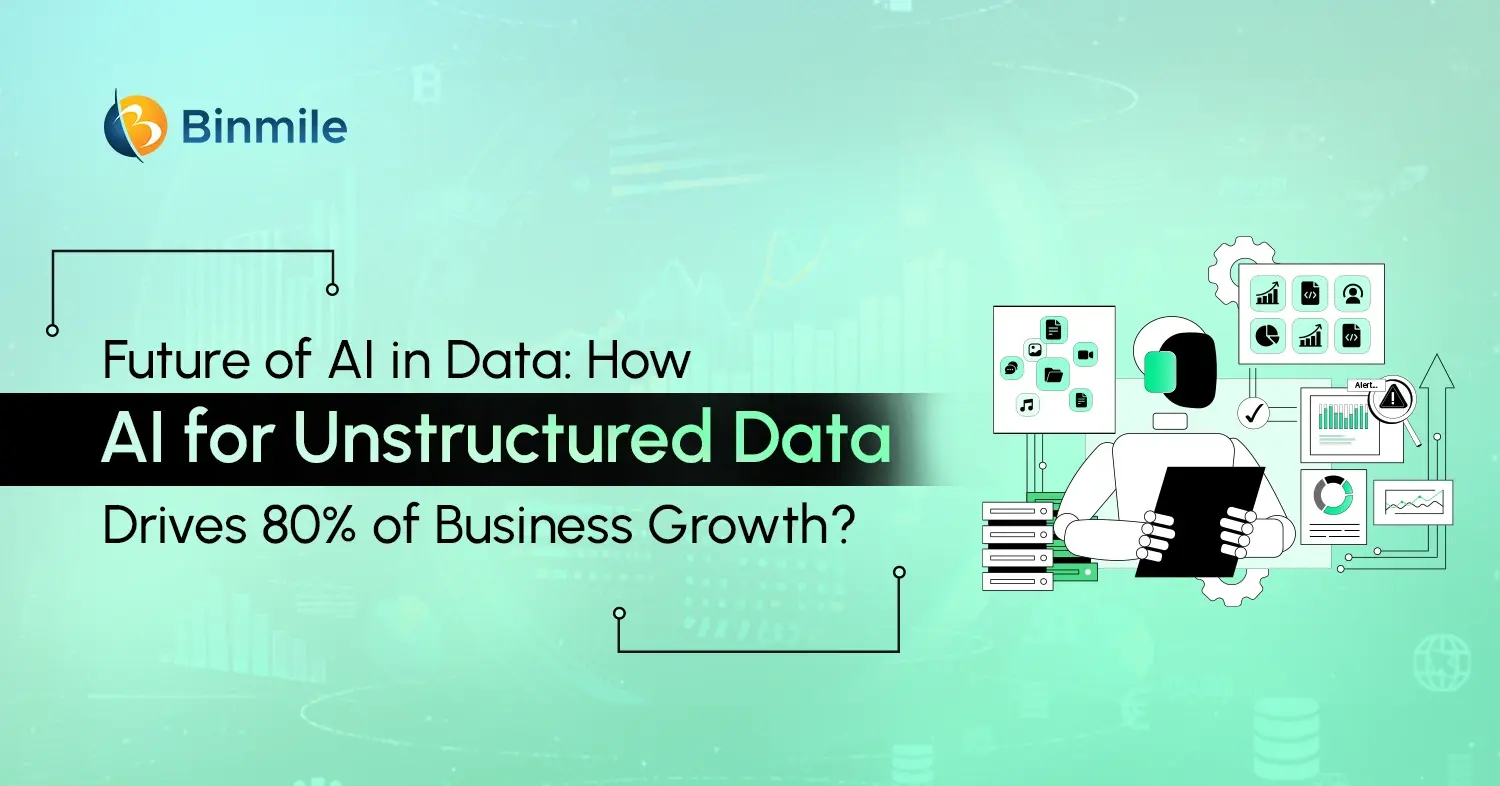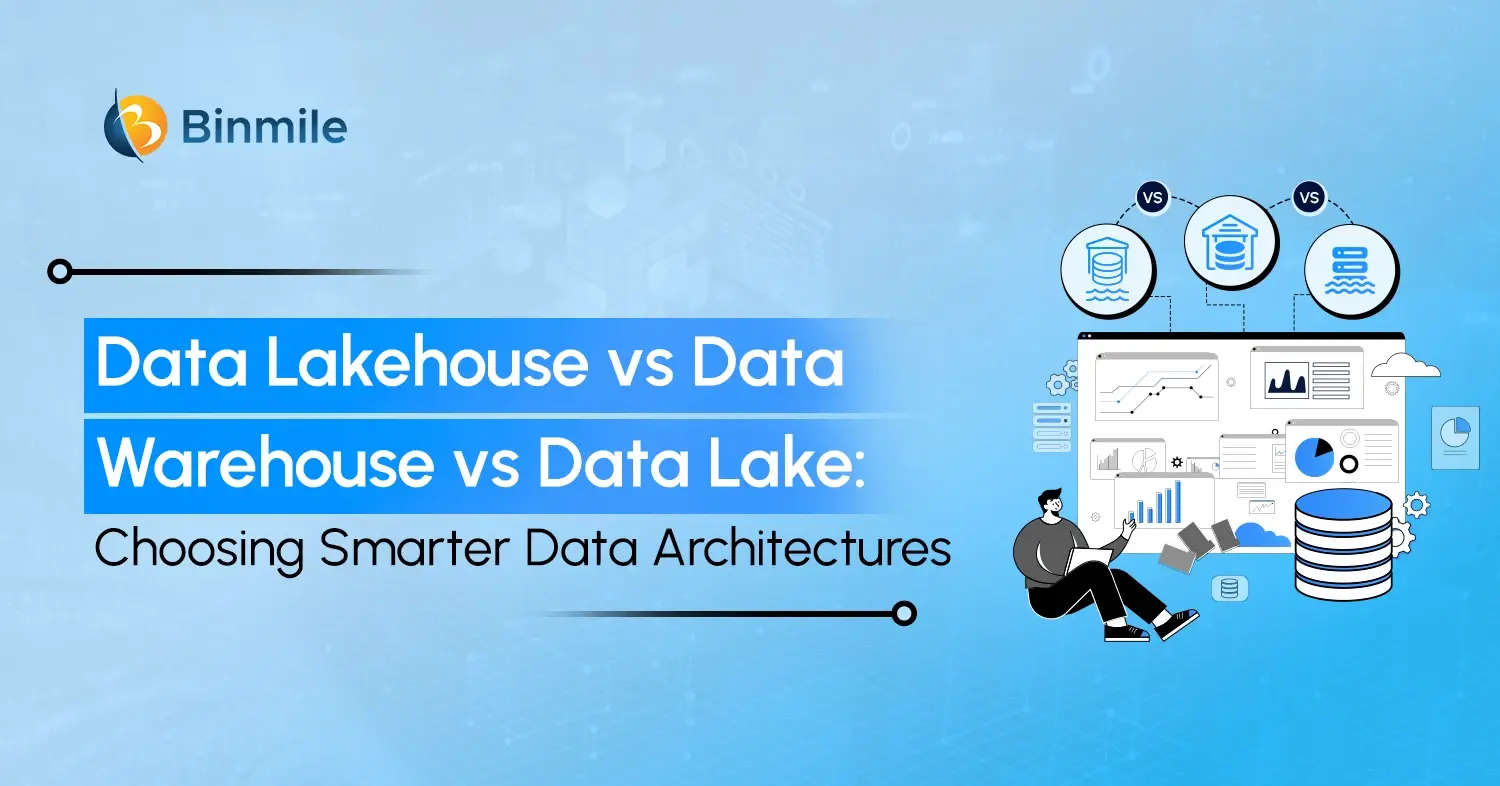Organizations generate and utilize data to enhance their services, boost productivity, and deliver personalized customer experiences. However, effectively managing the enormous data is challenging for them. The traditional data management approaches are ineffective as they bring issues like scalability, security vulnerabilities, and data inconsistency. This is where smart data management tools and methods come into play. They help businesses manage large and varied data sets with accuracy, consistency, and security. With the advancement of technologies, new data management trends are emerging that revolve around how we use those tools. Data management trends offer automated management processes and AI-driven insights, which reduce manual labor costs and efforts.
In addition, by integrating these trends in data management, organizations can derive better data-driven insights, improved compliance, and reduced data management costs. Organizations are adopting these trends, which is quite evident, as the global data management market is growing at a CAGR of 12.4% from 2025 to 2030. So, what exactly are these trends? This blog will provide the top data management trends and a step-by-step guide for implementing them in your organization.
Understanding the Need for Data Management
With 402.74 million terabytes of data being generated each day, managing the data has become the most important step. This vast amount of data is accumulating and needs to be efficiently managed for accessing and utilizing it in the future. Let’s explore some benefits of managing the data properly:
- Prioritizing the handling of data in a secure way protects the organization from data breaches, thefts, and financial losses.
- Data management offers complete visibility of the data assets, making the process of finding the right data faster.
- It helps eliminate the possibility of errors by complying with some policies for usage.
- Keeping the data secure and up-to-date, organizations can conduct research on the same data asset while avoiding the unnecessary costs of redeveloping it.
- An organization’s data assets can be protected by ensuring complete compliance with privacy regulations such as GDPR (General Data Protection Regulation).
Key Data Management Trends for Unlocking Data Accessibility
Now that we have understood the need for data management. Let’s discuss top data management trends that provide efficiency and accuracy in handling sensitive data.

1: AI/ML and Automation
AI (Artificial Intelligence), ML (Machine Learning), and Automation have redefined the organizations’ data strategies by introducing a new concept, “Augmented Data Management (ADM)”. Leveraging the use of these advanced technologies, ADM enhances the data handling processes with its smart and adaptive systems. It involves key data handling aspects such as data integration, data cleansing, data modeling, data governance, etc. By eliminating the need for manual operations and efforts, it accelerates these data workflows and improves accuracy.
With the help of AI-driven insights, ADM works using structured protocols and continuously evolves after each learning. Businesses can aim to enhance efficiency and productivity across various domains by using ADM solutions. Some of the ADM solutions are data cataloging, anomaly detection, predictive analytics, etc., all executed with the help of machine learning algorithms.
2: Cloud-based Data Strategies
Organizations are widely adopting cloud-based data strategies to store, manage, and optimize data. There are 3 main cloud data strategies: hybrid cloud, multi-cloud, and native cloud.
The hybrid cloud approach provides two environments—a private cloud and a public cloud, providing seamless collaboration and workload distribution between these two environments. In contrast, a multi-cloud approach uses more than one cloud provider, resulting in increased flexibility and reduced dependency on one cloud provider. The cloud-native utilizes cloud technologies such as microservices, containers, serverless infrastructure, etc., to improve resilience and scalability of the organization.
By leveraging these strategies, organizations can access their data from anywhere with a good internet connection. From tracking, computing, storing, and calculating total network costs, these cloud platforms support all of these using online automated scaling systems. Embracing these cloud platforms helps in minimizing overhead costs and reducing redundancy throughout the data management phases.
3: Data Governance
AI-driven data governance frameworks can incorporate the use of ethical AI, fairness metrics, and bias mitigation systems to build trust and ensure data protection of an organization. These frameworks ensure that all the essential compliances are fully met and organizations responsibly use the data.
In addition, businesses can enhance data handling systems by using automated governance. The automated governance approach uses self-driven concepts and helps in simplifying processes such as data lineage tracking, metadata management, access control, etc. This results in improved efficiency and data accuracy.
Integrating these governance strategies within the organization’s security posture can help in managing the security and privacy throughout the dataset’s lifecycle. These protocols not only secure the data, but they also ensure the availability of necessary data for internal audits or any other core business activities.
4: Data Fabric
To address challenges such as data silos, inefficient management processes, and other security risks, an architecture was invented, which is data fabric. Data Fabric uses APIs and data services to put all the existing data from systems like data lakes and data warehouses into a single, unified, and integrated platform.
It uses an augmented data catalog that provides extensive metadata connectivity and enables seamless data integration across varied data sources. This improves visibility, thus reducing the chances of data silos and inconsistent data processes.
By leveraging AI, it automates data discovery and classifies information into data assets based on a particular context for better access. Additionally, with its holistic view of the data assets, it helps organizations in making informed decisions that improve their business processes.
5: Multi-domain MDM
With the rising complexity of managing data, organizations are now adopting a key data management trend, which is a multi-domain MDM (Master Data Management). MDM ensures that all the data domains are seamlessly integrated and managed using a unified, centralized platform.
MDM ensures that the critical data now remains consistent and accurate, helping in streamlining operational processes. It also eliminates data silos, which leads to better collaboration between numerous data domains like product data, financial data, customer data, etc.
It further strengthens the data foundation by prioritizing operational scalability and provides organizations with major benefits like:
- Compliance and Regulatory friendly
- Improved data consistency
- Enhanced data integration
- Faster insights
Know the Difference: Data Management vs Data Governance
5 Steps to Implement Data Management Trends in Your Organization
Developing a data management strategy that can help your organization navigate the ultimate complexities is necessary. It also helps organizations have complete security and meet regulatory compliance. Here’s a step-by-step guide for the effective implementation of these trends.

1. Evaluating the Data Management Framework
Before choosing the right data management trend, organizations should assess their data management frameworks. This is necessary for understanding the organization’s state and identifying any strengths, weaknesses, and gaps in the current data management protocol. With regular audits, data sources and data workflows can be checked clearly. These aspects can then provide a clear picture of the organization’s data maturity level.
2. Prioritize the Organization’s Goals
Every data management trend will not necessarily fit or be equally relevant to an organization. Therefore, implementing a trend involves prioritizing the organization’s specific objectives and goals. This will help you in knowing the potential impact that can happen after the adoption of a particular data management trend. The main goal is to avoid chasing the trend for popularity perspectives and discover how that specific trend will address the business challenges.
3. Training the Team
This phase involves familiarizing team members with the new data management tools and strategies. If the training is done with a complete understanding of the new data trends, then it ensures long-term success for the organization. Always ensure that the training period covers knowing about the technical aspects of the tool and how it aligns with the compliance and privacy protocols. Additionally, cross-functional training is a key solution for efficient data management, as it will help various team members know the value of data integrity and the usage of data.
4. Select the Right Data Management Tool
After prioritizing the objectives and goals, selecting the right data management tool is the next step. The right tool will help improve data quality and consistency across various domains. It will also help in creating a smooth integration in the existing system. Leveraging the right tool will collect and extract meaningful insights without any errors. Moreover, it will also enhance security, ensure privacy, and meet regulatory requirements.
5. Monitor for Continuous Improvement
Now, the last step is to adopt an improvement strategy for better data protection and management. This can be done by leveraging AI for streamlined operations such as anomaly detection for missing values, cleansing of the data, data classification, etc. With AI, you can automate these processes, which will help in reducing manual workloads and inefficient data processes. When the organization works efficiently, it will lead to less risk-prone results, preventing potential financial losses.
Closing Statement on Data Management Trends
Data management trends offer more than just storing information but also harnessing the data’s powers through smooth, secure, and reliable access. These trends empower organizations with automated tasks, smooth data integration, and ensured data quality. However, aligning the correct data management trends with your business goals and requirements helps you nurture a data-driven culture within your team and achieve data operational excellence.
In this blog, we have discussed the top 5 data management trends and how to implement them step-by-step in your organization. Partnering with a software development company can help you in embracing one of these trends to improve data quality and ensure compliance that drives efficiency.









